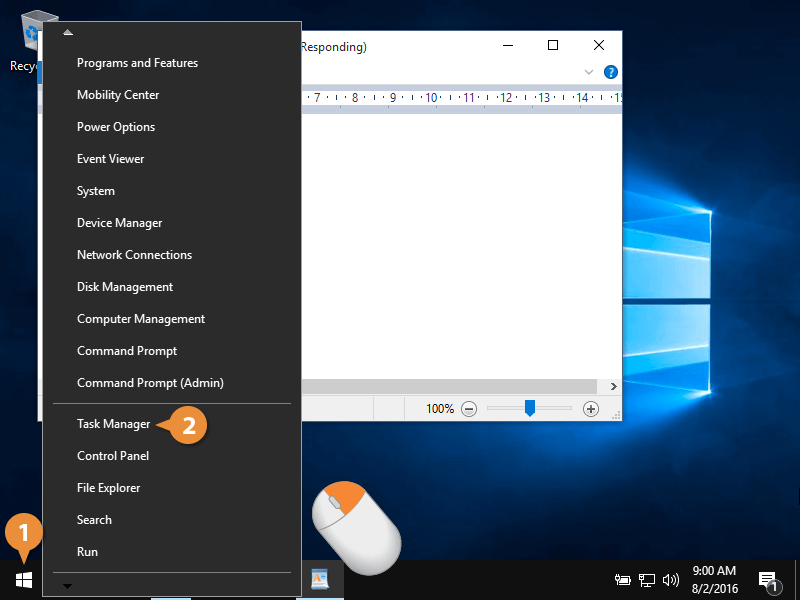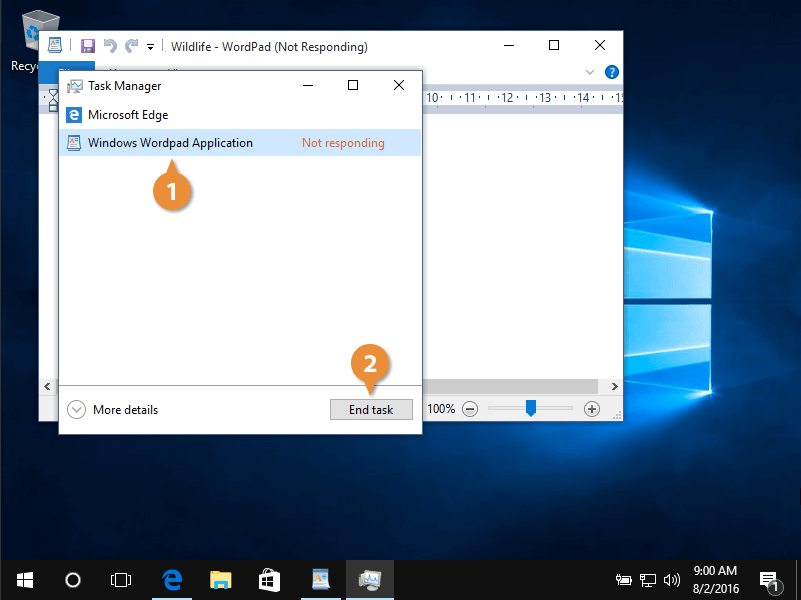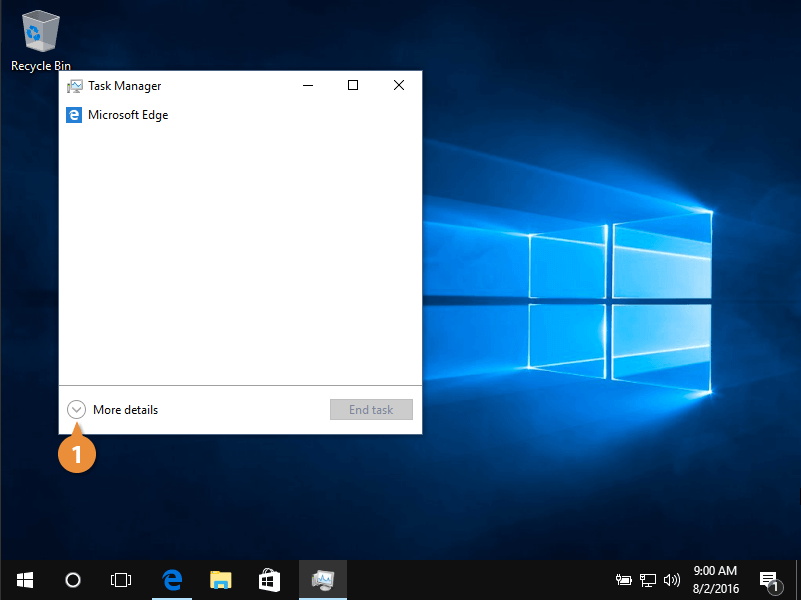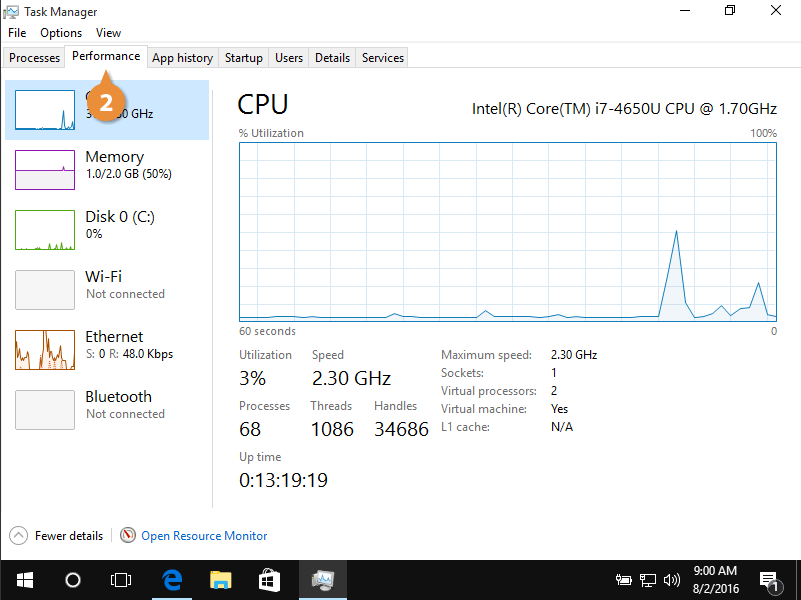Occasionally, apps don't respond to commands, including the close command. You can manually close an unresponsive app using Task Manager. From Task Manager, you can also obtain:
- Running processes
- App performance
- App history
- Apps available at startup
- User information
- Task Manager options
If your computer is completely locked, open Task Manager by pressing Ctrl, Alt, and Delete together. In most cases, you can open Task Manager because your computer is functioning, but an open app is unresponsive.
- Right-click the Start button to view the Quick Links menu.
Shortcut: Press + X to view the Quick Links menu.
- Choose Task Manager.
Running apps appear in the Task Manager window.
To help you clearly identify which apps are unresponsive, you'll see the term Not responding next to unresponsive apps. You can manually end an unresponsive task, or app.
- From Task Manager, select a task.
- Click End Task.
You can use Task Manager to view more information about your running apps and computer performance.
- From Task Manager, click the More details list.
- Click the Performance tab.
View a second-by-second performance graph for your computer's CPU.
Switch to graphs representing memory, disk usage, network connections, or Bluetooth.
The following table details the tabs that appear in the Task Manager detailed view.
| Tab |
Description |
| Processes |
Provides a synopsis of each app currently in use. |
| Performance |
Showcases life graphs of your CPU, memory, desk, Wi-Fi, and Bluetooth usage. Confirm how long the computer has been running. |
| App history |
Details app usage history. Delete usage history, when desired. |
| Startup |
View apps and programs that run at computer start-up and their impact on the computer at start-up. Prevent any apps or programs from running at start-up from here. |
| Users |
Provides system resource usage by user. All users eligible to use the computer are visible. |
| Details |
Includes resources each app is using. |
| Services |
Details the system programs that run in the background. System programs provide core functionality. |
Disable apps and programs that start automatically to help your computer start, or boot up, faster.
- Click the Startup tab.
- Select a start-up app.
- Click Disable.
When your computer starts, that app won't automatically open.





